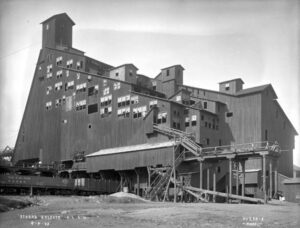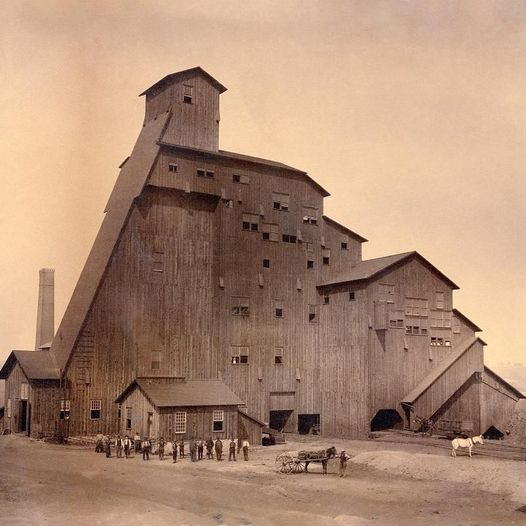The Forgotten Colossus of Coal
In the late 19th century, Pennsylvania pulsed with the relentless hum of industrial progress. Among the flurry of mines, factories, and rail yards, a brutally impressive structure emerged—the Sibley Breaker. Constructed in 1886 on the site of an earlier 1873 facility, it was not only a marvel of industrial engineering, but also the largest wooden building in the United States at that time.

Purpose-built for the brutal task of coal processing, the Sibley Breaker was a mammoth timber labyrinth of conveyors, crushers, and sorting floors. Coal arrived high above, tumbled through crushing mechanisms, and was hand-sorted by workers—often including young "breaker boys" exposed to dust, noise, and perilous machinery.
Inside the Wooden Giant
From the outside, Sibley loomed like a factory-city made of wood. Inside, the atmosphere was oppressive—coal dust hung thick as fog, sunlight strained to penetrate tiny windows, and workers moved with purpose amid thunderous vibrations. Though awe-inspiring, the building was dangerous by design, a symbol of unchecked industrial ambition.

A Blaze That Consumed the Titan
Tragically, such scale coupled with wood and coal dust was a recipe for disaster. The original 1873 structure burned in early 1886, but by summer, A.B. Tyrrell Co. had rebuilt it on the same foundations. The successor, grander as ever, met its fate on June 23, 1906—a fire erupted around 10:45 a.m. and quickly consumed the breaker, engine house, boiler, and supply buildings. Flames were said to be visible for miles.

Why It Slipped Through History’s Cracks
Unlike brick or steel, wood leaves little behind. With Sibley gone in a day, its physical imprint vanished. Its place was taken by more fire-resistant, modern facilities. Today, only a handful of rare photographs preserve its ghostly silhouette—tiny human figures or horses by its base give scale to its once unimaginable size.

A Monument to an Era of Excess and Risk
The Sibley Breaker stands as a paradox: a testament to audacious human ingenuity and a stark reminder of the era’s disregard for safety. It symbolized progress built atop precarious foundations—both literally and morally. Industrial historians and architects remember it as a unique architectural achievement, a giant that rose and fell like the age it represented.
Final Thoughts
This is more than a story of a lost building—it’s a shocking slice of forgotten industrial might. A wooden colossus that stood towering through coal dust and ambition, only to vanish in a flash, unseen and unremembered, yet echoing across time. Today, the Sibley Breaker endures only through fading photographs and the awe of those who uncover it.
Want to dive deeper into the miners' lives, the architecture, or the tragic fires that consumed these giants? Just say the word—I can explore more hidden marvels like this.

